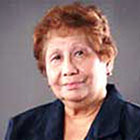PROFESSIONAL organizations such as the Philippine Institute of Civil Engineers and similar professional associations require continuing professional education (CPE) immersion of their professionals. This consists of updates in the trends, new initiatives, approaches, etc. related to their profession. In the public schools, teachers attend in-service activities. In colleges and universities, both public and private, faculty members are sent to continuing professional education activities such as seminars, conferences or for degree programs as part of their department’s faculty development program. Upon return of these faculty members, they may be asked to “ëcho” what they learned. This “sharing” is a sound practice; in certain situations such learning is truly helpful – particularly when these are applicable to the assignment of faculty members and utilization of which are feasible environment-wise. However, some learning from these activities could be short-lived for several reasons. The new learning brought into the departments may need equipment that cannot be improvised and there is lack of funding for such equipment; or this new learning may be threatening to significant others.
Across borders, particularly in Europe, the term CPD is used more often than CPE. CPE more properly refers to training which is linear and formal. Training objectives are usually focused on learning a particular skill or set of skills to improve professional competence. CPD refers both to training and knowledge, skills and attitude development significantly relevant to capability and competency in one’s profession. PRC uses both terms: CPE and CPD. In this issue, we will talk about some features of an institution-based CPD.
Continue reading with one of these options:
Ad-free access
P 80 per month
(billed annually at P 960)
- Unlimited ad-free access to website articles
- Limited offer: Subscribe today and get digital edition access for free (accessible with up to 3 devices)


